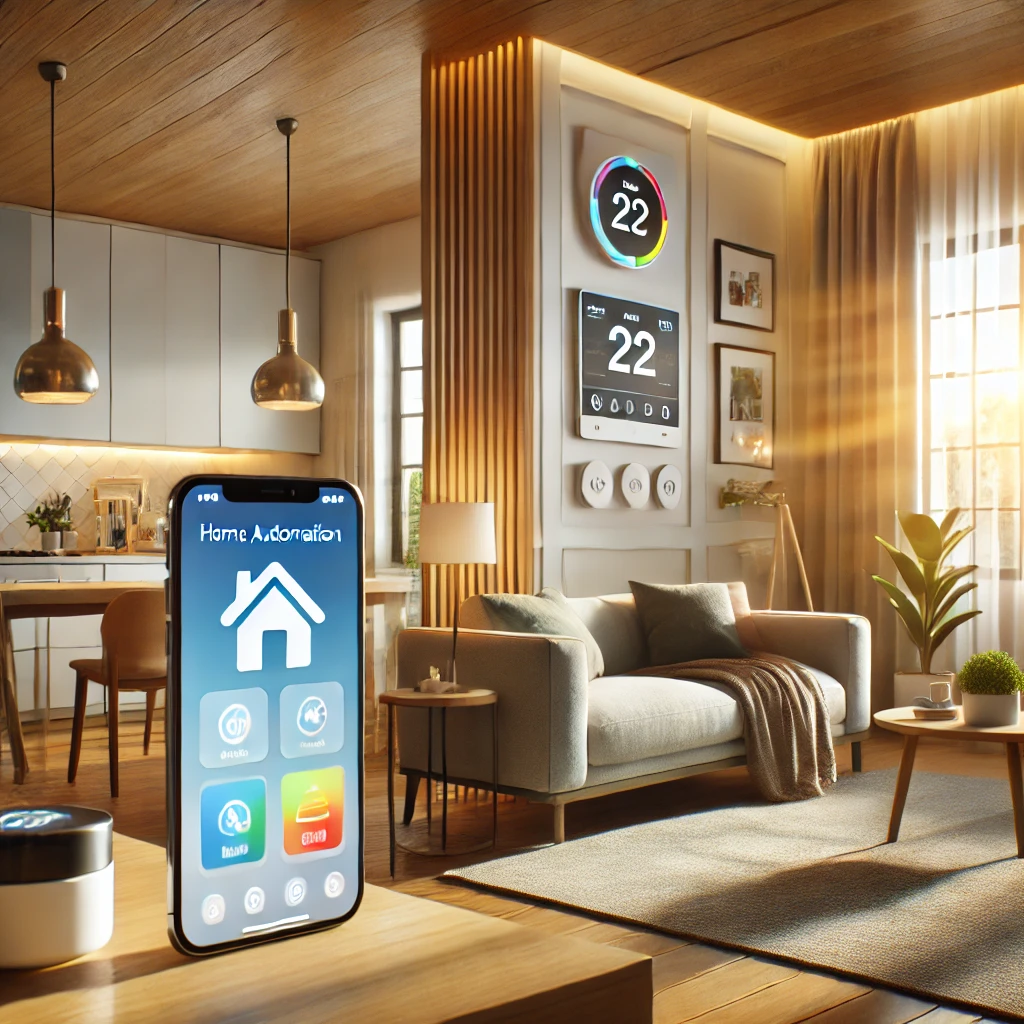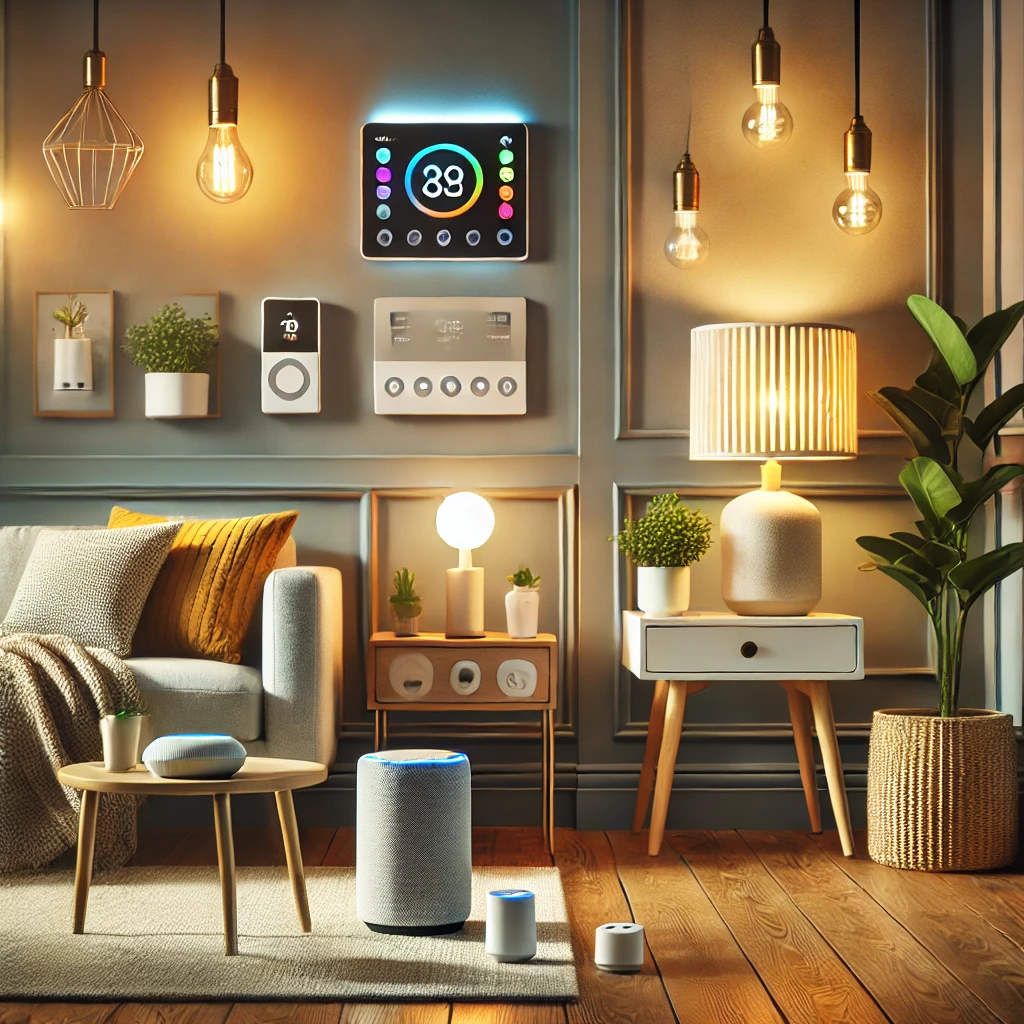Introduction
Making your home smarter doesn’t have to cost a fortune. I’ve been exploring affordable home automation systems for beginners and found that anyone can get started with just a few basic devices. Whether you’re looking to improve security, save energy, or enjoy more convenience, this guide will show you how to begin your journey into home automation without breaking the bank.
Why Consider Home Automation?

Home automation isn’t just about fancy gadgets. It’s about making your life easier and your home more efficient. Here are some key benefits:
- Convenience: Control your lights, thermostat, and more from your smartphone.
- Energy Savings: Smart devices can help you cut down on electricity bills.
- Improved Security: Smart cameras and locks keep your home safe.
- Customization: Tailor your home’s settings to your lifestyle.
Affordable Home Automation Systems for Beginners
1. Start Small with Smart Plugs
Smart plugs are one of the easiest and most affordable ways to begin automating your home. Simply plug them into an outlet and connect them to your Wi-Fi. They allow you to:
- Control devices remotely using a smartphone app.
- Set schedules for turning appliances on and off.
- Monitor energy usage to save electricity.
2. Upgrade to Smart Lighting
Smart bulbs and switches can instantly transform your home’s ambiance. They’re simple to install and offer features like:
- Voice control: Use Alexa, Google Assistant, or Siri to adjust lights.
- Color customization: Change colors to suit your mood or activity.
- Energy efficiency: LED smart bulbs last longer and use less power.
3. Invest in a Smart Speaker or Hub
A smart speaker or hub acts as the central control system for your smart devices. Popular options include:
- Amazon Echo: Works seamlessly with Alexa-compatible devices.
- Google Nest Hub: Perfect for Google Assistant users.
- Apple HomePod Mini: Ideal for Apple enthusiasts.
These devices allow you to control multiple gadgets using voice commands or a single app.
4. Add Smart Thermostats
Smart thermostats help you save energy by learning your habits and adjusting the temperature automatically. Some affordable options include:
- Google Nest Thermostat: Simple and budget-friendly.
- ecobee3 Lite: Offers advanced features without the high price tag.
- Wyze Thermostat: Great for beginners with easy installation.
5. Enhance Security with Smart Cameras and Locks
If safety is a priority, smart security devices are a must. Here are some budget-friendly options:
- Smart Cameras: Brands like Wyze and Blink offer affordable indoor and outdoor cameras with motion detection and cloud storage.
- Smart Locks: Look for models from August or Schlage for keyless entry and remote control.
These devices give you peace of mind by letting you monitor your home from anywhere.
6. Use Smart Sensors
Smart sensors can detect motion, temperature, and even water leaks. They’re perfect for:
- Security: Motion sensors can trigger alarms or cameras.
- Safety: Leak detectors help prevent water damage.
- Comfort: Temperature sensors can work with your thermostat for better climate control.
7. Explore Smart Entertainment Options
Enhance your entertainment experience with:
- Streaming Devices: Roku and Fire TV Stick make any TV smart.
- Smart Speakers: Sync them for multi-room audio.
- Voice-Controlled Remotes: Control your TV and streaming devices with your voice.
Tips for Setting Up Affordable Home Automation Systems
1. Choose a Compatible Ecosystem
Before purchasing devices, decide on a platform such as Alexa, Google Assistant, or Apple HomeKit. This ensures all your gadgets work seamlessly together.
2. Start with One Room
Focus on automating a single room to avoid feeling overwhelmed. For example, start with your living room by adding smart lighting, a speaker, and a streaming device.
3. Look for Budget-Friendly Brands
Affordable brands like Wyze, TP-Link, and Kasa offer reliable smart devices at reasonable prices. Check reviews and compare features before buying.
4. Take Advantage of Sales
Keep an eye out for discounts during events like Black Friday, Prime Day, or holiday sales to get the best deals on smart devices.
5. Use DIY Installation
Most smart devices are designed for easy setup, so you won’t need to hire a professional. Follow the manufacturer’s instructions, and you’ll be up and running in no time.
Common Challenges and How to Overcome Them
Connectivity Issues
- Solution: Ensure your Wi-Fi signal is strong and consider a range extender if needed.
Compatibility Problems
- Solution: Stick to devices that work with your chosen ecosystem (Alexa, Google Assistant, or HomeKit).
Learning Curve
- Solution: Start with simple devices and gradually expand your system as you become more comfortable.
Conclusion
Affordable home automation systems for beginners make it easy to transform your living space into a smart home. By starting small and choosing budget-friendly devices, you can enjoy the convenience, security, and efficiency of modern technology without spending a fortune. Remember, it’s all about taking one step at a time and finding solutions that work for your home and lifestyle.
FAQs
1. What is the easiest way to start home automation?
Start with simple devices like smart plugs or bulbs that don’t require complicated installation.
2. Can I set up home automation on a budget?
Yes! Affordable brands like Wyze, TP-Link, and Kasa offer budget-friendly options.
3. Do I need a smart hub to get started?
Not necessarily. Many smart devices can work independently using Wi-Fi and a smartphone app.
4. How do I ensure my devices are compatible?
Choose devices that are compatible with the same platform, such as Alexa, Google Assistant, or HomeKit.
5. Are smart devices energy efficient?
Yes, many smart devices, like LED bulbs and smart thermostats, are designed to save energy and reduce costs.




